Just after midnight on Wednesday, June 15, 1927, agents of the Soviet secret police, then known as the OGPU, barged into the Leningrad apartment of the sixth Lubavitcher Rebbe, Rabbi Yosef Yitzchak Schneersohn, of righteous memory, and arrested him.
Over the next trying months many individuals, both Jewish and not, would play important parts in obtaining the Rebbe’s freedom. One man, however, stands out: Mordechai Dubin. An influential Jewish community leader in the then-independent Baltic state of Latvia, Dubin was the Rosh Hakahal of the Riga Jewish Community and an elected representative in every sitting of the country’s parliament, the Saiema, until its dissolution in 1934. Before that, he’d been a member of Latvia’s provisional National Council and interim Constituent Assembly. Dubin, a dedicated and pious Chabad-Lubavitch Chassid who was known for praying at length every Shabbat, combined the roles of old-world Jewish intercessor, or shtadlan, and savvy modern politician. Interestingly, he led the Agudas Yisrael political party in Latvia, though Chabad had formally withdrawn from the worldwide Agudah organization in 1909. While elsewhere in Europe the Orthodox Agudah represented the interests of its natural constituency, i.e. Charedi Jewry, Latvia had few Charedi Jews. Nevertheless, it was the most popular Jewish political party in Latvia, voted for regularly by Jews of all backgrounds, including non-observant ones. The reason was not the party, but the man who led it in Latvia: Dubin.
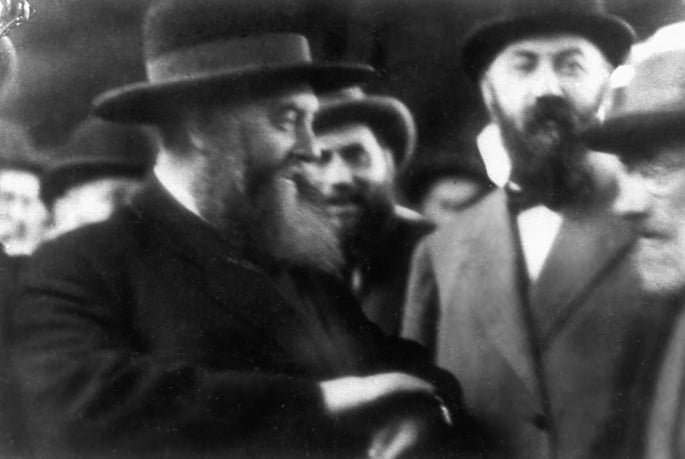
Dubin was beloved precisely because he “made no distinction between one Jew and another, treated them all as equals and was not concerned whether the man he helped had voted for him or not," recalled Riga-native Isaac Maor. "He would do his best to free a young Jew arrested for illegal Communist activities, just as he saw to it that Jewish soldiers should be given leave for Jewish festivals. He would try to obtain a permit for a flax merchant, demand government support for synagogues or Yeshivot, or would vote in the [Saeima] for a government grant to the Jewish Theatre.”1
On June 2, 1927, Latvia signed a trade deal with the Soviet Union. Though economically Latvia needed this deal much more than the Russians did, the Bolsheviks had their own reasons for seeing the deal through. Yet, due to well-founded fears of Soviet encroachment on Latvia—after all, the country had been a Russian territory for some 150 years prior to the Revolution—there was strong internal Latvian opposition to the deal, and it still needed to be ratified by the Saiema. Dubin’s party at that point held two seats in parliament. When the Rebbe was arrested less than two weeks later, the 38-year-old Dubin found himself in prime position to play hardball with the Soviets.
“Mordechai Dubin was so strong a believer that he could not see the circumstances around the ratification of the trade agreement as anything but heaven-sent,” wrote Avraham Godin, who beginning in 1929 served as one of Dubin’s secretaries. “The timing was perfect.”2
That spring, summer and fall of 1927, a whirlwind of international events would collide, all of them seemingly in the natural order of things, but each playing a concrete role in what would culminate in a miraculous conclusion.

Religious Repression and Resistance
War on religion had been a central plank of Bolshevik ideology from the start. While Karl Marx famously declared religion “the opium of the masses,” Vladimir Lenin’s attitude was, writes Robert Conquest, “far harsher and more hostile.” For him, there was no greater threat to the Communist ideal than the rulership of G‑d. “Millions of sins, filthy deeds, acts of violence and physical contagions … are far less dangerous than the subtle, spiritual idea of a [G‑d] … ,” Lenin wrote. Absolute standards of ethics, rooted in the belief in G‑d, were incompatible with Lenin’s definition of morality as “that which serves to destroy the old exploiting class.”3
Having taken power of Russia through revolution and civil war, the new Bolshevik regime set out to destroy faith in anything other than Man. Through indoctrination, social and material pressure, physical intimidation and brute violence, they decimated religious life in the Soviet Union. No one waged this crusade more zealously than the Yevsektzia, the Jewish sections of the Communist Party, who felt the need to prove themselves “the right kind of Jews.”4 As the Yevsektzia leader Esther Frumkina explained: “The danger is that the masses may think that Judaism is exempt from anti-religious propaganda and, therefore, it rests with the Jewish Communists to be even more ruthless with rabbis than non-Jewish Communists are with priests.”5 One non-Jewish Communist admiringly remarked: “It would be nice to see the Russian Communists tear into the monasteries and holy days as the Jewish Communists do to Yom Kippur.”6
Yet traditional Judaism did have something else going for it as well—defiance. “The most tenacious, and perhaps most effective, resistance to the revolution on the Jewish street was offered by the Jewish religious community,” observed the historian Zvi Gitelman. And the undisputed leader of this resistance was the Sixth Rebbe of Chabad, Rabbi Yosef Yitzchak Schneersohn.7
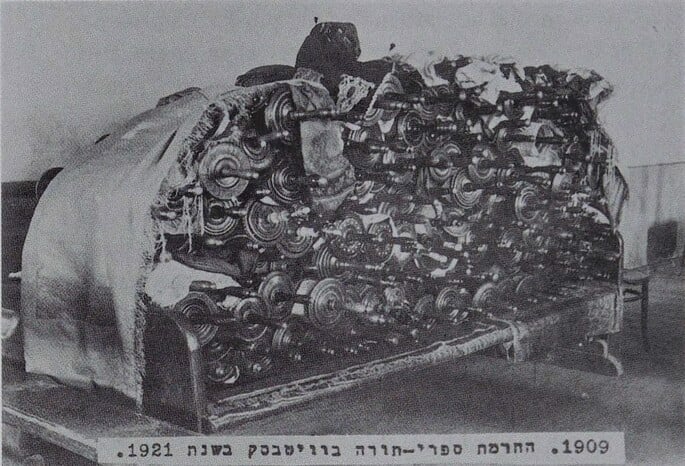
Eschewing every opportunity and invitation to leave Russia, the Rebbe—the foremost Jewish leader to remain in the USSR—threw himself heart and soul into the work of strengthening Jewish life throughout the vast empire. He did this in an organized and systematic manner, mobilizing the students and graduates of Tomchei Temimim, the yeshivah his father and predecessor had established in 1897, to take up posts as rabbis, shochetim and teachers in Jewish communities large and small. Jewish education, he knew, was of the greatest importance, and he established a wide network of clandestine yeshivahs for both young children and older students.8
For this he earned the admiration of Jews at home and abroad, but also the enmity of the Bolsheviks, in particular the Yevsektzia. In 1924, authorities forced the Rebbe to relocate from his base in the southern city of Rostov-on-Don to Leningrad, where they could keep a closer eye on him. On his arrival, however, they were frustrated to see a reinvigoration of traditional Jewish life in the city. An indignant Leningradskaya Pravda reported in May of 1927 that the growing interest in Judaism instigated by Schneersohn could be seen “not only among Jewish bourgeois elements, but in more or less broad circles of the Jewish working class.”9
One month later, the Rebbe was arrested.
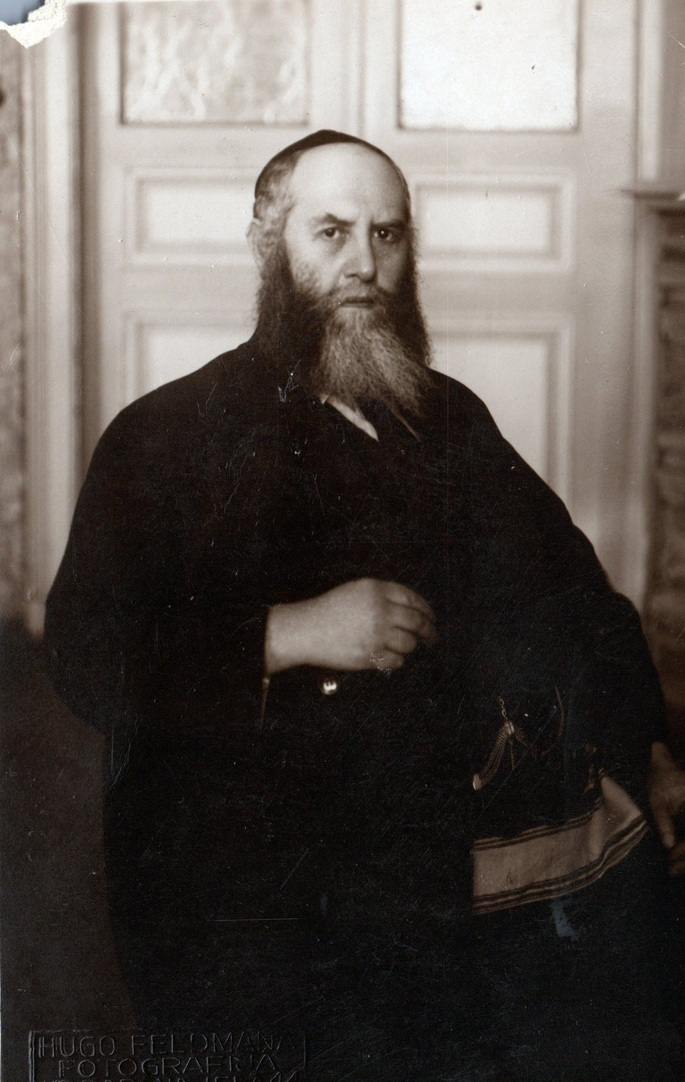
Communist Paranoia and International Unrest
By 1927, the Bolsheviks were firmly in power, and Stalin had all but established himself as Lenin’s unrivaled heir. The issue he now faced was governing, which required a different set of skills than revolution. “Almost all the problems,” writes Stalin biographer Stephen Kotkin, “could be traced to the source of the regime’s strength: Communism.” It might be good Communist theory to tell the world that your goal was not only revolution in your country but theirs as well, but it did not bode well for international relations. Neither did Marxist-Leninist economics work as well in practice as it appeared on paper. “The problems of the revolution brought out the paranoia in Stalin,” writes Kotkin, “and Stalin brought out the paranoia inherent in the revolution. The years 1926-27 saw a qualitative mutual intensification of each…”10
Communism is inherently paranoid because it perceives enemies trying to crush the revolution everywhere.11 That the capitalist enemies of the revolution were working in concert to encircle and destroy the nascent Soviet Union was for Stalin not a cynical talking point, but a deeply held, orthodox Marxist-Leninist belief.12 That there were domestic opponents working hand-in-hand with these external enemies was also a given.13 In the winter of 1926-27 rumors ricocheted through Moscow that the Western capitalist powers were preparing some kind of attack, possibly even war. “ … [T]he OGPU reported [such a war] could take the form of an allied Polish-Romanian aggression, provoked into attack and supported by Britain and France, which would likely draw in Latvia, Lithuania, Estonia, and Finland … .”14
Everybody was suspect, but Great Britain was the subject of Stalin’s greatest preoccupation. His fears were reinforced when, on May 12, 1927, British police launched a four-day raid of the offices of the All-Russia Cooperative Society in London, which operated out of the same building as the official Soviet trade mission. The British accused Soviet trading agents of abusing “their extraterritorial rights and diplomatic immunity by interfering with British domestic affairs.”15 On May 27, the British stunned Stalin by cutting off diplomatic relations with the USSR, a heavy blow especially considering Great Britain had become one of their biggest trade partners.16
A little more than a week later, on June 7, a White Russian emigre terror cell successfully detonated a bomb in Leningrad, wounding 25 and killing one. That same day, the Soviet minister to Poland, Pyotr Voikov, was assassinated on a train platform in Warsaw; he had gone there to see off diplomats expelled from the Soviet embassy in London who were en route back to Moscow. Responding to Voikov’s murder, Stalin wrote “I feel the hand of England.” On June 8, Kotkin notes, “the OGPU received additional extrajudicial powers, including the reintroduction of emergency tribunals, known as troikas, to expedite cases … .” Arrests and executions on a scale unseen since the Civil War’s Red Terror immediately followed, including sweeps of alleged “terrorist-White Guards” in Leningrad.17
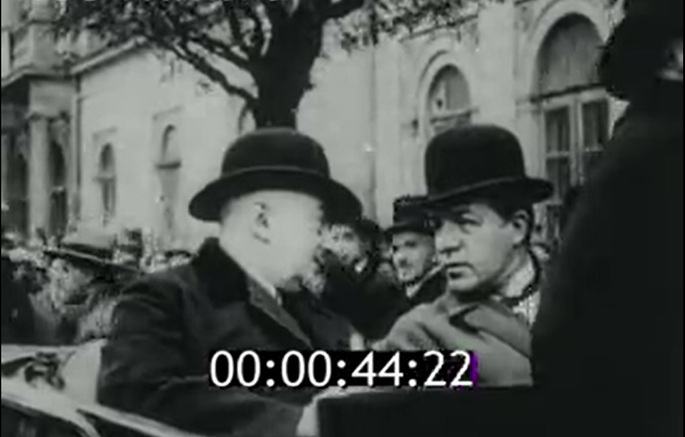
Taking advantage of this frenzy of murderous paranoia, the Yevsektzia goaded the OGPU into arresting Rabbi Yosef Yitzchak. Years later, in 1965, his son-in-law and successor, the Rebbe, Rabbi Menachem M. Schneerson, of righteous memory, recalled: “The arrest took place during a time of great emergency, for that’s when the Russian ambassador was killed in Poland. The government therefore determined it would kill a certain number of their subjects.”18 This state of heightened retaliatory repression, the Rebbe noted, continued through Rabbi Yosef Yitzchak’s first days of imprisonment.19
The Initial Rescue Campaign
In the first 24 hours after the arrest20 emergency rescue committees were established in both Leningrad and Moscow, each consisting of leading Jewish community figures. On Thursday afternoon Rabbi Shmaryahu Gourarie, the Sixth Rebbe’s elder son-in-law, was dispatched to Moscow to bring an in-person update from Leningrad. At the subsequent meeting three courses of action to bring about the Rebbe’s release were outlined: 1. Utilize private contacts within the Leningrad OGPU. 2. Turn directly to Soviet leadership at the Kremlin. 3. Arouse the support of world Jewry and international public opinion.
As a result of the new emergency situation, Stalin had just granted extraordinary powers to the OGPU and was encouraging them to use them. At that moment the Leningrad OGPU, at the center of the broader crackdown, held the Rebbe in their hands, so the decision was made to make appeals in Leningrad on the local level and not go over their heads by turning to their bosses in Moscow. By the end of the week, however, news leaked out that the Leningrad OGPU was determined to execute Rabbi Yosef Yitzchak. On Shabbat morning, June 18, the Leningrad committee sent a messenger to Moscow relaying the dire news. At this point it was decided there was nothing to lose and it was necessary to appeal to higher Soviet authorities in Moscow.21
Urgent telegrams were immediately sent to the Kremlin. “On the fifteenth of June was arrested in Leningrad on orders of the L[eningrad]OGPU Rabbi Schneersohn,” read the Moscow committee’s urgent telegram to Mikhail Kalinin, the head of state. “Rabbi Schneersohn is deeply revered among many tens of thousands of Jews of the USSR.” Noting that the Rebbe had nothing to do with political activity, the committee asked in the name of the Moscow Jewish community that the Rebbe be released as soon as possible.22
At the same time, they sent word of the Rebbe’s arrest to major Jewish communities around the country, hoping in this way to amass hundreds of thousands of signatures for a petition protesting the Rebbe’s imprisonment. A public fast on the following Monday and Thursday was announced. One of the most consequential steps the Moscow committee took was to enlist the aid of Madame Yekaterina Peshkova, head of the Political Red Cross in Russia and the first wife of Russian literary icon Maxim Gorky. At various points Peshkova personally met with Vyacheslav Menzhinsky, head of the central OGPU, and Premier Alexei Rykov. At this point the outside world still did not know of the Rebbe’s arrest, and it seems that it was primarily due to Peshkova’s lobbying in those first few days that the Rebbe’s death sentence was stayed.23
International Mobilization
News of the Lubavitcher Rebbe’s arrest in the Soviet Union was not widely known in the West until the Jewish Telegraphic Agency (JTA) reported it on June 28, 1927—the 28th of Sivan24 —nearly two weeks after the arrest. “The famous Lubowitscher Rebbe, Schneursohn … holds a position of high regard and esteem,” the JTA dispatch read. “His arrest has caused great excitement among the Jewish population.”25 It likewise shocked Jews around the world. “Grave news received,” Chief Rabbi Abraham Isaac Kook of the Holy Land cabled from Jerusalem to the American Jewish Joint Distribution Committee (JDC) in New York. “Rabbi Schneirson of Lubovitch arrested Leningrad … . Try utmost for deliveration wire results.”26
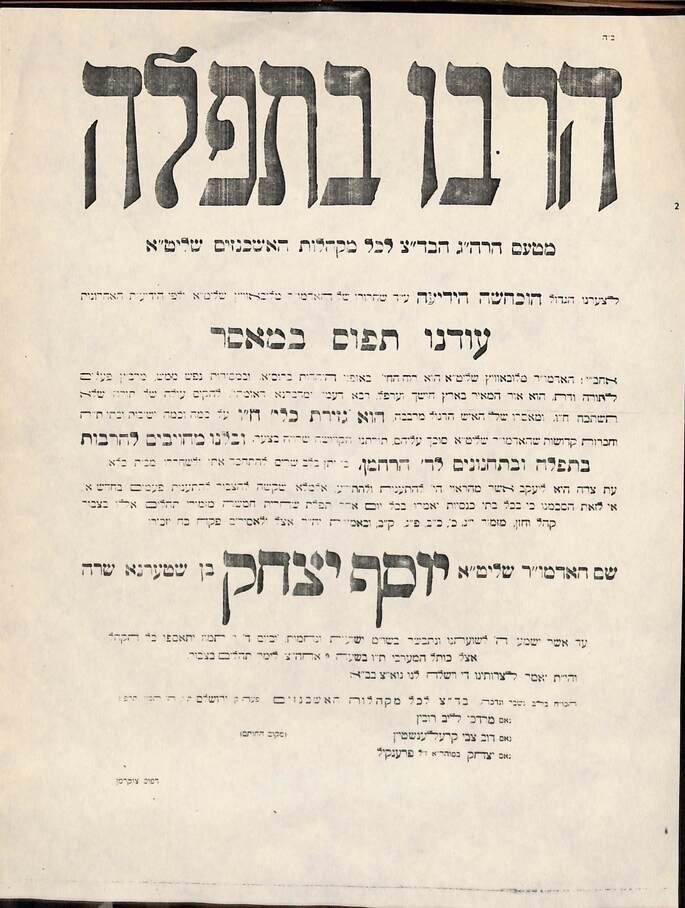
The news hit Riga as many of its Jewish denizens vacationed on the beaches of what was popularly known as the Riga Strand. “Oh, how I recall that morning on the Rigan seaside!” wrote Godin. “On the front pages of the newspapers, in large bold print, they carried the news [of the Rebbe’s arrest].”27 As had been done in Russia, a day of fasting and prayer was announced in Latvia, and the JTA office in Riga “was continually besieged by the Rabbi’s followers, asking for further news.”28 On July 1 this communal grief and angst turned into celebration when they received a dispatch from Leningrad mistakenly claiming the Rebbe had been released. The news was contradicted the next day, throwing the Jews of Latvia into a state of confusion.29
The news provoked an international outcry. On June 30, in response to throngs of telegrams similar to Rav Kook’s begging the JDC to do something on the Rebbe’s behalf, the organization’s Dr. Joseph Rosen—who was usually stationed in Moscow but was visiting New York at the time—wired prominent Bolshevik Pyotr Smidovich: “Rumors arrest Rabbi Shneerson Leningrad made extremely unfavorable impression among our friends here … If rumors true would appreciate your … helping whatever way possible.”30
Though the United States did not have relations with the Soviet Union at the time, American Jews, most prominently the brothers Chaim Zalman (Hyman) and Yekusiel (Sam) Kramer, went about enlisting the help of various U.S. officials to pressure the Soviet government. This included Sen. William Borah of Idaho, the chairman of the Foreign Relations Committee, and a longtime and leading proponent of recognizing the USSR—something Soviet officials well knew.31
Simultaneously, a campaign to rescue the Rebbe was launched in Germany, which did have relations with the USSR, led there by Rabbi Dr. Meir Hildesheimer and Dr. Leo Baeck. They drafted Dr. Oskar Cohn,32 a Jewish former Social Democrat member of the Reichstag, and then all together met with the German Foreign Minister. This in turn led to a meeting with the Deputy Chancellor, who had a close relationship with Soviet ambassador to Berlin, Nikolai Krestinsky. This German group’s work would prove crucial to the many efforts that would take place on the Rebbe’s behalf over the months ahead.33
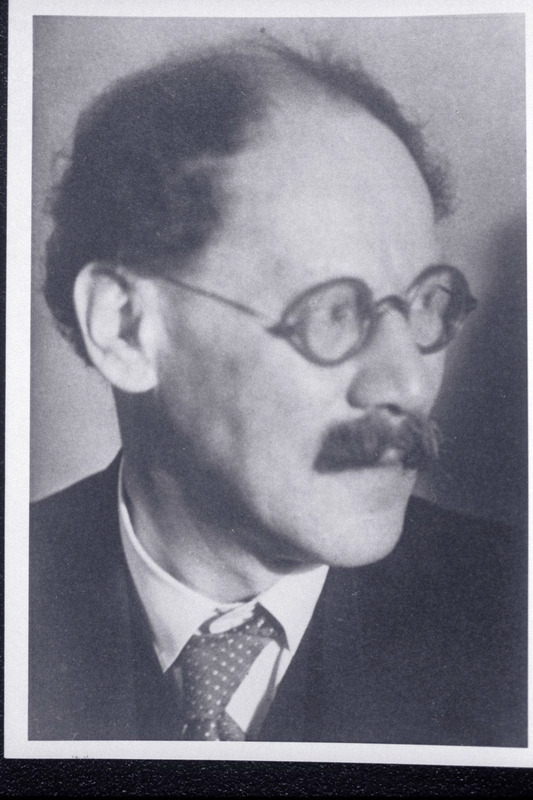
As a result of all of this attention and activity, the Rebbe’s sentence was reduced to 10 years of hard labor on the northern Solovki (Solovetsky) islands. This, too, was soon countermanded, and on July 3 (3 Tammuz), the Rebbe was released from prison and exiled to the city of Kostrama for a period of three years.34 Less than 10 days later Rabbi Yosef Yitzchak was informed of his unconditional release, and allowed to return home the next day. While those days, 12-13 Tammuz on the Hebrew calendar, have been marked by Chassidim as a festival of liberation ever since, at the time the Rebbe was still far from safe. Officials in Leningrad were seething over his release and seeking any chance to re-arrest the Jewish leader. How could Rabbi Yosef Yitzchak’s safety be secured?
At this dangerous juncture, Dubin faced off directly with the Russians.
Latvia’s High Stakes Trade Deal
The Republic of Latvia was proclaimed in 1918, and soon emerged as an independent and fragilely democratic European statelet. This would mark the beginning of a golden age of sorts for Latvia’s Jewish community. True, difficulties remained, but Jewish life bustled. Interwar Latvia was home to synagogues, Jewish hospitals, social-service institutions and multiple Jewish schools representing various streams, all of which were at various times subsidized by the government.
Meanwhile, the Latvian Jews’ former compatriots, the Jews just over the border in Russia, felt the full brunt of Communist oppression. Rabbi Yosef Yitzchak took up the dangerous task of organizing and leading the Jewish religious resistance, but this was made even more difficult by Bolshevik nationalization, which rendered many of his philanthropic supporters penniless. The largest Jewish population in the world found itself suddenly imprisoned and in desperate need of support from abroad. Meanwhile, many Jews in Western Europe and America had a difficult time understanding how bad and rapidly worsening the situation in Russia really was.35
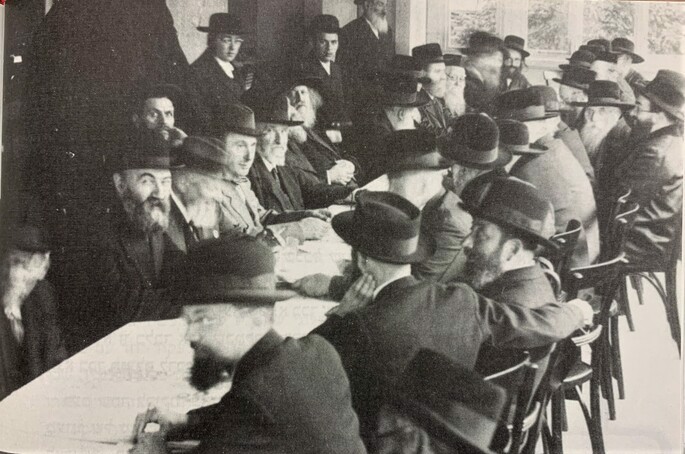
From the beginning, Dubin utilized every opportunity he had to bring attention to the plight of Russian Jewry. For example, at the very first Knessiah Gedolah of the worldwide Agudas Yisrael movement, held in Vienna in August of 1923, “Deputy Dubin of Latvia declared the ‘Knessiah’ was incomplete because of the absence of representatives of Russian Jewry, who ‘were groaning under the Bolshevists rule.’”36 Aside from advocating for Jews within the Soviet Union, Dubin was instrumental in assisting illegal Jewish immigrants flooding over the border into Latvia, many of whom hoped to go on to the United States. He worked closely with the Riga branch of HICEM (a European institution affiliated with HIAS, the Hebrew Immigrant Aid Society), and after the United States instituted strict immigrant quotas in 1924, helped those stranded in Latvian limbo to find jobs and legalize their status in the country.37
In the 1920s, Latvia, which had been a collision point between East and West for more than a millennium, took on an especially important role with respect to U.S.-Soviet relations. In the absence of an American embassy in Moscow, it was the U.S. legation in Riga that served as the clearinghouse for all information on Soviet affairs.38
But Latvia had its own difficulties, not least of which were economic. The country had been devastated by World War I but received no German reparations. Prior to independence, its deep ports had served as important transit points for Russian imperial commerce, but now it was on its own. “Latvia could not compete with Western firms in European trade and had lost the Russian market, as well as its role in transit,” Kotkin explained. As a result, the fledgling nation “looked to the Soviet Union as a way to revive their own economy and to act as an Eastern-Western bridge.”39
On May 1, 1927, a Latvian delegation arrived in Moscow to begin trade negotiations with the Soviet Union. Not long after the Moscow talks began, the British conducted their raid on the All-Russia Cooperative Society in London, and a few weeks later, Great Britain cut off diplomatic ties with the Soviet Union. Although worried they might soon find themselves stuck in the middle of a war between two great powers, Latvian officials nevertheless decided to take the plunge and on the afternoon of June 2, 1927, after a month of difficult negotiations, signed the Latvian-Soviet Treaty of Commerce.40
Russia, for its part, did not very much need a trade deal with the tiny Baltic state, and while they benefited from the industrial goods sent their way, their actual goal, according to Kotkin, was “to sow discord among the three Baltic states.”41 Paranoid as the Bolsheviks were about capitalist encirclement, they felt especially threatened by the idea of former Russian territories being used as staging grounds against them. During that summer’s British crisis, Soviet commissar of foreign affairs Georgy Chicherin “repeatedly warned the Baltic states that willingly serving as pawns of the Western powers in an anti-Soviet coalition would one day result in the loss of their independence.”42 A trade deal with the Latvians, in other words, was a step towards peeling them away from the West, which was the Russians’ main objective.
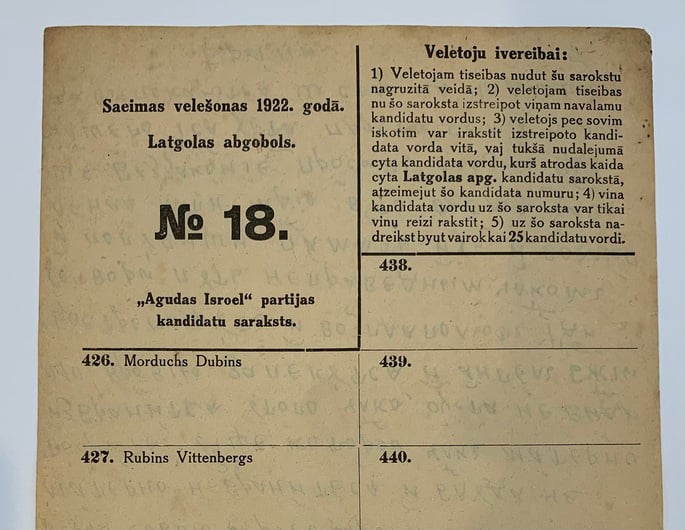
Once signed, however, the deal still needed to be ratified by the Saiema, and a hot debate over its merits arose in Latvia. When two Saeima deputies in the ruling coalition announced they would vote against the trade deal for fear it would embolden Latvian Communists, the Agudah party’s two votes suddenly became very valuable. Dubin decided to leverage his votes to guarantee the Rebbe’s safety.43
Dubin in the Land of the Soviets
Dubin had not shied from making anti-Soviet statements in the past, and had his own brush with the Bolsheviks during their short takeover of power in Latvia only eight years earlier. He had little reason to place much trust in his parliamentary status, remarking that plenty of people had disappeared in the Soviet Union despite such special protection. Indeed, only 14 years later Dubin would return to the USSR, this time as a prisoner, ultimately dying in a Soviet facility in the fall of 1957. Nevertheless, at this juncture when he arrived in Moscow he found himself treated not as a parliamentarian from a small country but as the representative of a great power.44 Obviously, he remained under constant surveillance while in the Soviet Union to the extent that his own relatives feared visiting him at his hotel.
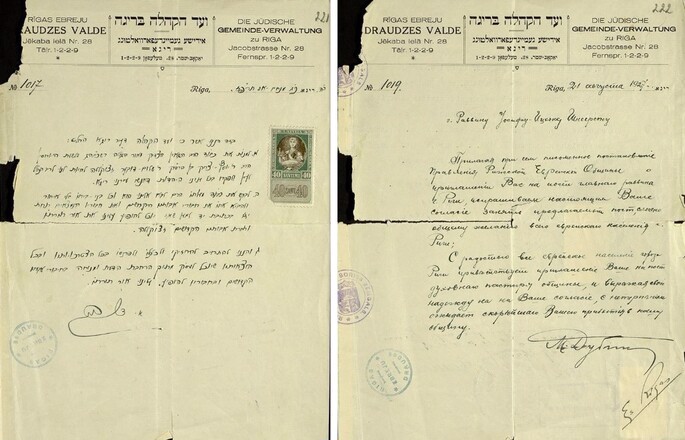
Dubin arrived with the goal of obtaining an exit visa for the Rebbe. Along with a letter of recommendation from the Soviet ambassador to Latvia, he also carried an official invitation from the Riga Jewish community requesting that Rabbi Yosef Yitzchak become their religious leader. In Moscow, doors opened left and right. But all the high-level meetings with officials at the People’s Commissariat for Foreign Affairs (Narkomindel), including the head of their Baltics section, came to nothing. His request that the Rebbe be allowed to leave the Soviet Union was met with a resounding no.45
At the same time, Dr. Oskar Cohn also traveled to the Soviet Union with an official invitation for the Rebbe from a congregation in Frankfurt. Cohn, who had once served as legal counsel to the Soviet legation in Berlin, raised the case directly with Chicherin, whom he knew personally,46 but was also rebuffed. Frustrated, Cohn told Dubin “There’s nothing more I can do!”47
At this point, both men returned to their respective hometowns. Although they were ostensibly working independently of each other, Dubin soon traveled to Berlin to strategize together with Cohn on how to best proceed with the Russians.48 Sometime that summer Dubin returned to Moscow to continue the effort.49 This time around, he was much more blatant with his demand. “You would like us and our friends to help you secure signatures that are needed for the commercial agreement with our country,” he told Mieczyslaw Dubronitsky, head of Narkomindel’s Baltics desk. “Yet when we present you with a request for a favor, you say No. We, the members of the Jewish community of our capital city, Riga, want the Lubavitcher Rebbe to be our rabbinical head—but you aren’t allowing him to leave Russia. Meanwhile, the Rebbe has received a similar invitation from the Jewish community of Germany, and you will possibly allow him to go there. I would like you to know that if that happens, you will antagonize the Jews of Latvia. They will thereby lose their heartfelt wish to see the Rebbe inducted as head of the Riga congregation—and that would jeopardize your negotiations on the proposed agreement.”50
The Latvian trade deal was a part of Moscow’s broader foreign-policy objectives. Seeing it at risk, the Soviets finally agreed to allow Rabbi Yosef Yitzchak to leave the Soviet Union, but with a caveat. He would have to go alone and leave his family behind, an insurance policy that he not continue his anti-Soviet activities abroad. The Rebbe, however—who spent six weeks of the summer lying low in the Moscow suburb of Malakhovka, where Dubin visited to confer with him—refused, stating in no uncertain terms that he would not leave the country without his family, nor without his library of sacred books and manuscripts. Rabbi Yosef Yitzchak remained in peril in mid-September, when he made what would be his last visit to the Ohel of his father, the fifth Rebbe, Rabbi Sholom DovBer, in Rostov.51 On Sept. 16 Hildesheimer sent a telegram to the JDC’s Dr. Rosen, who was still in New York:
Rabbi Schnersohn who is now in Moscow is still in danger. Wherefore the rabbi of Riga deems it necessary to influence the Russian government to liberate rabbi and his entire family consisting of 8 persons as well as his library. We are sending commissioner to Moscow and beseech you likewise to cable to Moscow. Cable us if and to whom and what you have cabled.52
Rosen sent a response that same day explaining that he felt it inadvisable to cable Moscow and that he would take up the issue in person when he was back in Russia in November.53
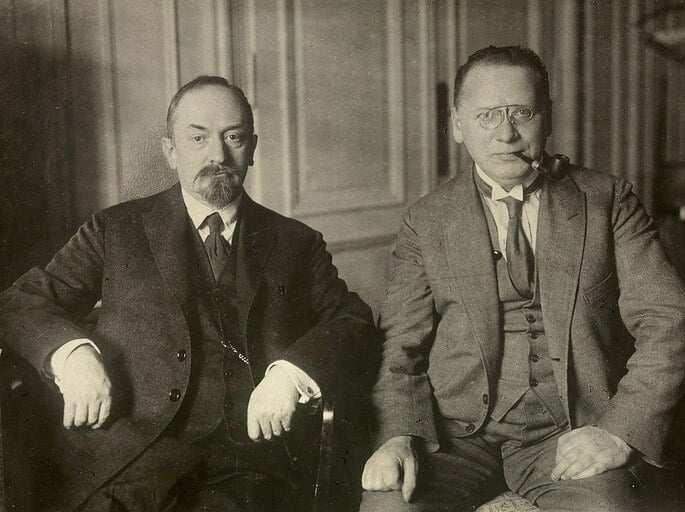
The “rabbi of Riga” Hildesheimer refers to in his cable is Dubin, while the “commissioner” is Oskar Cohn, who returned to Moscow and joined forces with Peshkova to pressure the Soviet government to allow Rabbi Yosef Yitzchak to leave together with his family and library.54 But it was Dubin’s threats that ultimately swayed the Russians. On Sept. 28, the second day of Rosh Hashanah, a special meeting was held at the Commissariat of Foreign Affairs in Moscow to decide the Rebbe’s fate. In attendance was Chicherin; Maxim Litvinov, the deputy commissar of foreign affairs; Teodor Rotstein,55 member of the collegium of the commissariat of foreign affairs; Dubronitsky, head of the commissariat’s Baltic division; and Ivan Lorents, the Soviet ambassador to Latvia,56 who had earlier arrived in Moscow to further the trade deal and underscore how important Dubin’s votes were for its passing.57 The meeting finally concluded with the decision to allow the Rebbe, his family, and entire library to leave the Soviet Union. Three days later, on Oct. 1, 1927, Soviet passports, exit visas and Latvian entry visas were issued for the entire family, including Rabbi Yosef Yitzchak’s future son-in-law and successor, Rabbi Menachem M. Schneerson.58
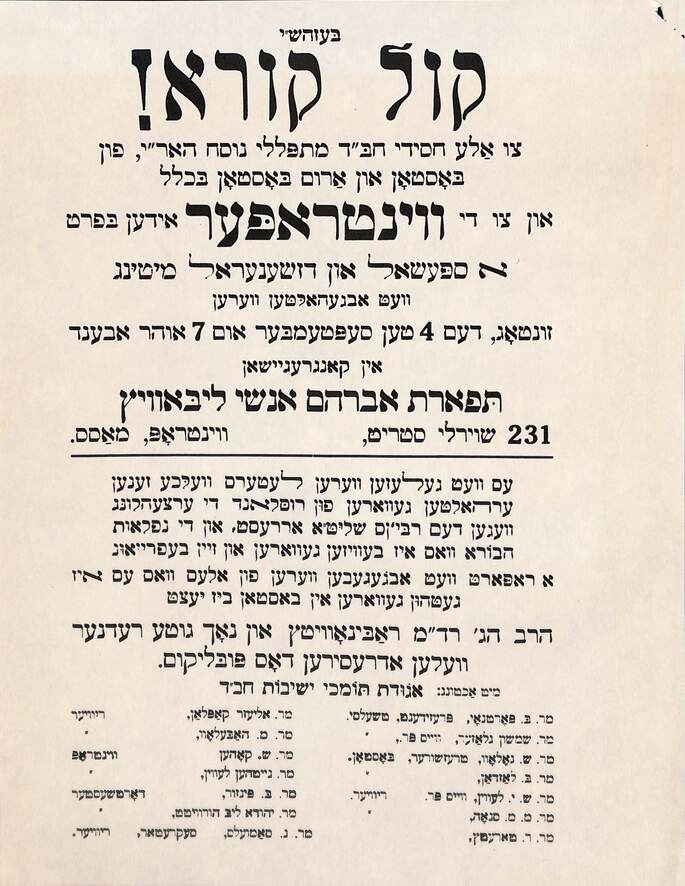
A Bittersweet Deliverance
While the formalities were being settled, Chassidim from throughout the Soviet Union traveled to Leningrad to spend what they realized would be the Rebbe’s last High Holidays in the Soviet Union together with them. But even after official permission was granted problems kept arising, and Dubin traveled to Leningrad to assist with these, too. One last hitch involved the library. A Jewish censor from the Bureau of Publications was supposed to formally give permission for the library to leave the country, but upon seeing the priceless volumes and manuscripts, he flew into a rage and declared he would never allow it. Dubin immediately contacted the censor’s superiors, explicitly mentioning the high-stakes diplomatic agreements that were at stake, and demanded they send an alternative representative to go through the library. Taking a hint, they sent a non-Jew who promptly gave his consent and went home.59
Dubin then went back to Riga,60 returning to Leningrad on the intermediate days of Sukkot in time to spend a spirited Simchat Torah together with the Rebbe and throngs of Soviet Jews. “I must say,” Dubin remarked in an interview with the Riga Frimorgn, published two days after the Rebbe’s arrival in Riga, “I never could have imagined that in Russia the spirit of Jewish faith remains so strong.” He went on to describe the bittersweet festivities in Leningrad, how 1,000 Jews from throughout the Soviet Union—rabbis, tradesmen, professors, lawyers, those who were religious and those far from it—“danced, and sang Chassidic tunes and were joyous as in days of old.”61
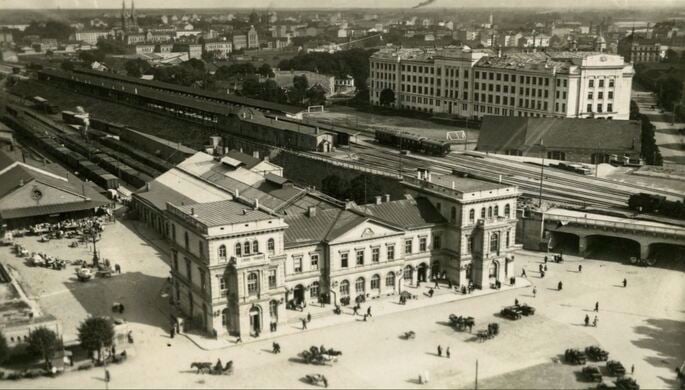
On the day after Simchat Torah, Oct. 20, 1927, Rabbi Yosef Yitzchak, his family and library left the Soviet Union in four train cars, headed for Riga. Dubin was also on board, escorting them until the last moment of danger had passed and they were all safely in Latvia, where “a tremendous ovation was accorded Rabbi Schneursohn upon his arrival at the Riga station.”62
“It is not that I have left Russia,” Rabbi Yosef Yitzchak wrote, “only that my dwelling place is outside of Russia’s borders. Even this is only in order that I can continue my work for the benefit of Russian Jewry, freely and independently.”63
In his interview with the Frimorgn, Dubin spoke of the tremendous pressure Jews in the Soviet Union were under due to the insidious work of the Yevsektzia. He noted that while Jewish faith had suffered quantitatively, the steadfast Jewish spirit had only strengthened qualitatively. He likewise pointed out that Russian Jewry’s economic conditions were grave, but ended the interview on a positive and defiant note. “In general there is nothing to despair about,” he told the interviewer. “We cannot be despondent.”
Dubin kept his end of the deal. Four days later, at a midnight session held on Oct. 27, 1927, the Latvian Saeima finally ratified the treaty of commerce with the Soviet Union. Although opponents of the ruling coalition, the two Agudah deputies—Dubin and Reuven Wittenberg—voted for the bill, which passed by a vote of 52 for and 45 against, with two abstentions.64
“While the [Sixth Rebbe’s] deliverance was a miracle that transcended nature,” the Rebbe pointed out in 1991, “it also influenced the natural order, to the point that the natural order agreed, as it were,” to this miraculous series of events. Geopolitical agitation, Communist paranoia, and the bureaucratic ratification of a trade deal, all came together to the point that Bolshevik officials—including the same people who had ordered the arrest in the first place—were forced to facilitate, and even expedite, his release. Encapsulated in this naturally unfolding miracle, the Rebbe said, is “the continuing impact” of his predecessor’s historic deliverance, namely, “the universal redemption of the entire Jewish people from all who oppose them.”65
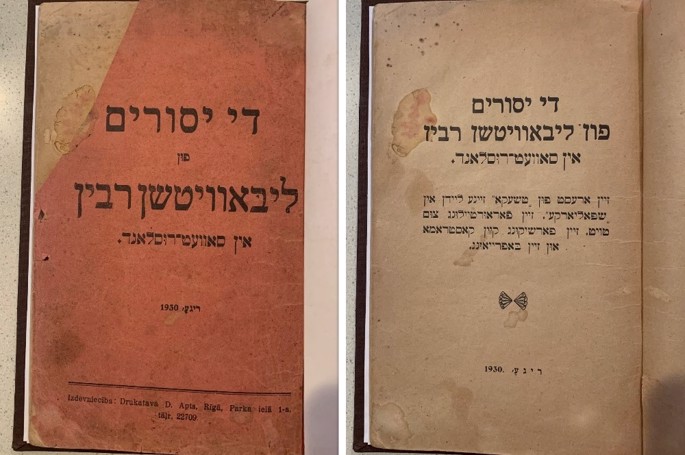






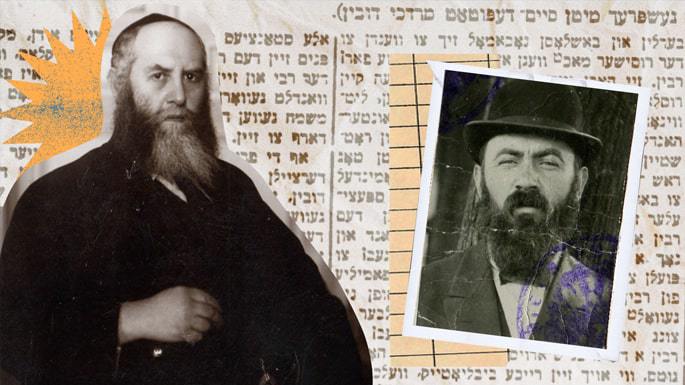
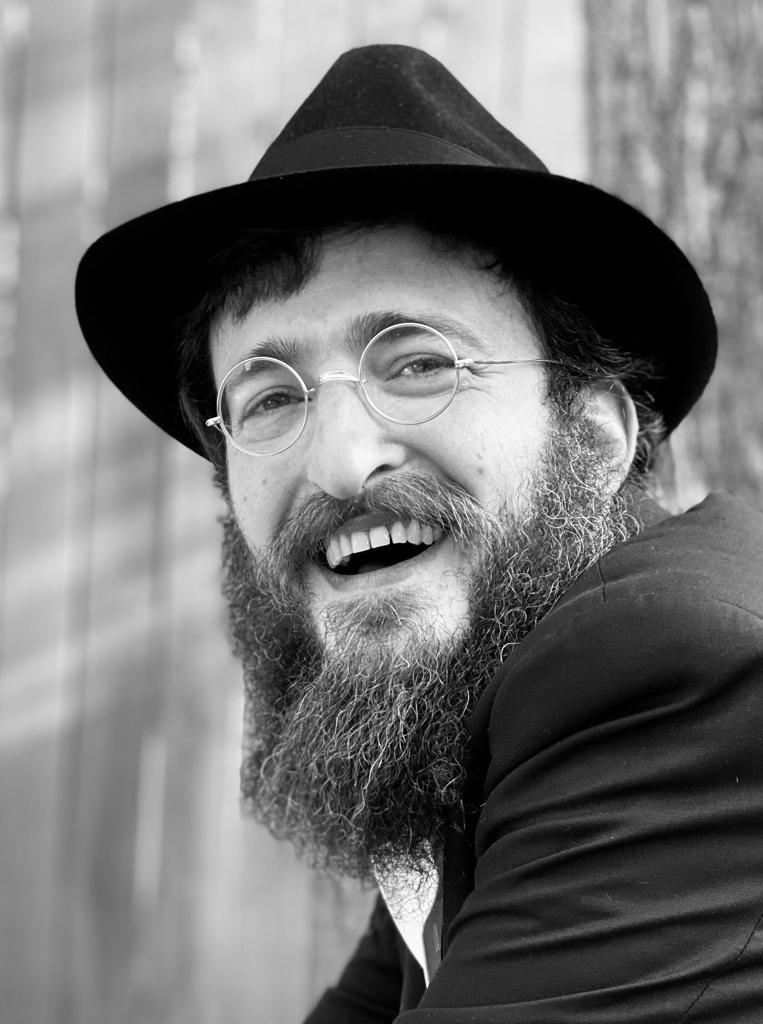


Join the Discussion